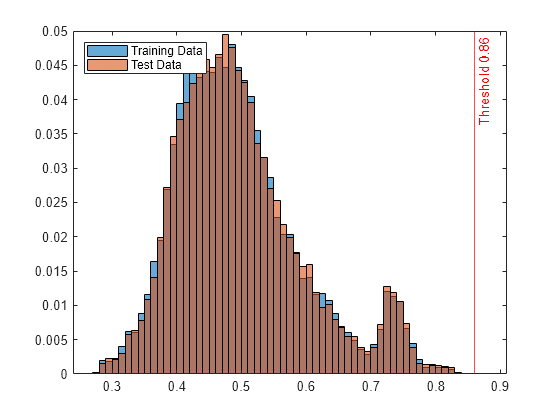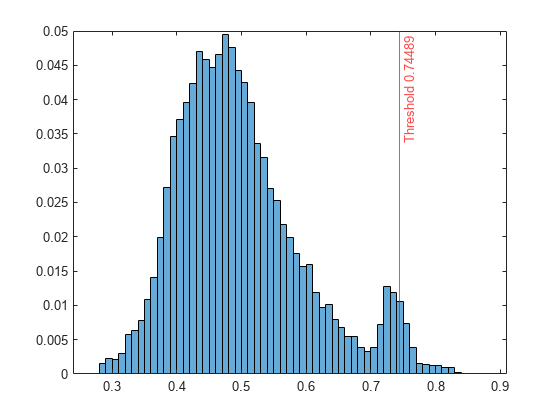isanomaly
Syntax
Description
tf = isanomaly(forest,Tbl)Tbl using the IsolationForest
object forest and returns the logical array tf,
whose elements are true when an anomaly is detected in the corresponding
row of Tbl. You must use this syntax if you create
forest by passing a table to the iforest
function.
tf = isanomaly(___,Name=Value)ScoreThreshold=0.5
Examples
Input Arguments
Name-Value Arguments
Output Arguments
More About
Algorithms
isanomaly considers NaN, '' (empty character vector), "" (empty string), <missing>, and <undefined> values in Tbl and NaN values in X to be missing values.
isanomaly uses observations with missing values to find splits on
variables for which these observations have valid values. The function might place
these observations in a branch node, not a leaf node. Then
isanomaly computes anomaly scores by using the
distance from the root node to the branch node. The function places an observation
with all missing values in the root node, so the score value becomes 1.
References
[1] Liu, F. T., K. M. Ting, and Z. Zhou. "Isolation Forest," 2008 Eighth IEEE International Conference on Data Mining. Pisa, Italy, 2008, pp. 413-422.
Extended Capabilities
Version History
Introduced in R2021b


